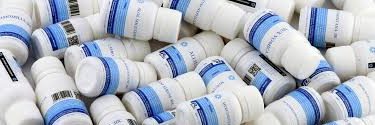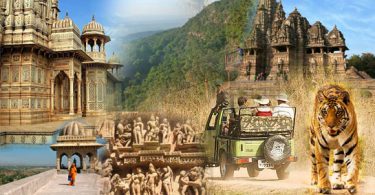INTRODUCTION
The symptoms of renal stone are related to their location whether it is in the kidney, ureter, or urinary bladder. Initially, stone formation does not cause any symptom. Later, signs and symptoms of the stone disease consist of renal colic (intense cramping pain), flank pain (pain in the back side), haematuria (bloody urine) , obstructive uropathy (urinary tract disease), urinary tract infections, blockage of urine flow, and hydronephrosis (dilation of the kidney). These conditions may result in nausea and vomiting with associated suffering from the stone.
EPIDEMIOLOGY
Globally, kidney stone disease prevalence and recurrence rates are increasing with limited options of effective drugs. Renal stone affects about 12% of the world population at some stage in their lifetime. It affects all ages, sexes, and races, but occurs more frequently in men than in women within the age of 20–49 years . However, lifetime recurrence rate is higher in males, although the incidence of kidney stone is growing among females. Therefore, prophylactic management is of great importance to manage renal stone.
Recent studies have reported that the prevalence of kidney stone has been increasing in the past decades in both developed and developing countries. This growing trend is believed to be associated with changes in lifestyle modifications such as lack of physical activity and dietary habits and global warming.
PATHOPHYSIOLOGY
Kidney stones (calculi) are mineral concretions in the renal calyces and pelvis that are found free or attached to the renal papillae. By contrast, diffuse renal parenchymal calcification is called nephrocalcinosis. Stones that develop in the urinary tract form when the urine becomes excessively supersaturated with respect to a mineral, leading to crystal formation, growth, aggregation and retention within the kidneys. Globally, approximately 80% of kidney stones are composed of calcium oxalate mixed with calcium phosphate. Stones composed of uric acid, struvite and cystine are also common and account for approximately 9%, 10% and 1% of stones, respectively. Urine can also become supersaturated with certain relatively insoluble drugs or their metabolites, leading to crystallization in the renal collecting ducts (iatrogenic stones).
Several models of kidney stone formation have been proposed; the two dominating mechanisms for the initiation of stones are commonly described by the terms ‘free particle’ (in which crystals form ‘Randall’s plugs’ in the tubule) and ‘fixed particle’ (in which stones grow on so-called Randall’s plaques.
TYPES OF RENAL STONES
Calcium Stones: Calcium Oxalate and Calcium Phosphate
Calcium stones are predominant renal stones comprising about 80% of all urinary calculi. The proportion of calcium stones may account for pure calcium oxalate (50%), calcium phosphate, termed as apatite) (5%), and a mixture of both (45%).Many factors contribute to Ca stone formation such as hypercalciuria (resorptive , renal leak, absorptive, and metabolic diseases).
Struvite or Magnesium Ammonium Phosphate Stones
Struvite stones occur to the extent of 10–15% and have also been referred to as infection stones and triple phosphate stones. It occurs among patients with chronic urinary tract infections that produce urease, the most common being Proteus mirabilis and less common pathogens include Klebsiella pneumonia.
Uric Acid Stones or Urate
This accounts approximately for 3–10% of all stone types . Diets high in purines especially those containing animal protein diet such as meat and fish, results in hyperuricosuria, low urine volume, and low urinary pH (pH < 5.05) exacerbates uric acid stone formation . Peoples with gouty arthritis may form stones in the kidney(s)
Cystine Stones
These stones comprise less than 2% of all stone types. It is a genetic disorder of the transport of an amino acid and cystine. It results in an excess of cystinuria in urinary excretions, which is an autosomal recessive disorder caused by a defect in the rBAT gene on chromosome 2 , resulting in impaired renal tubular absorption of cystine or leaking cystine into urine. It does not dissolve in urine and leads to cysteine stone formation.
Drug-Induced Stones
This accounts for about 1% of all stone types . Drugs such as triamtere, and sulfa drugs induce these stones. For instance, people who take the protease inhibitor indinavir sulphate, a drug used to treat HIV infection, are at risk of developing kidney stones
SIGNS AND SYMPTOMS
When symptoms appear, they commonly include:
- pain in the groin, the side of the abdomen, or both
- blood in the urine
- vomiting and nausea
- urinary tract infection (UTI)
- fever and chills, if there is an infection
- an increased need to urinate
If kidney stones block the passage of urine, a kidney infection may result. The symptoms include:
- a fever and chills
- weakness and fatigue
- cloudy, foul-smelling urine
If a person has any of these symptoms, they should seek medical help at once.
COMPLICATIONS
- Recurring kidney stones, since people who have had kidney stones at least once, have 80 % chance of getting them again.
- Obstruction or blockage in the urinary tract
- Kidney failure
- Sepsis, which can occur after the treatment of a large kidney stone
- An injury to the ureter while undergoing surgery for the removal of the kidney stone
- Urinary tract infection.
DIAGNOSIS
A computerised tomography (CT) scan
X-ray
Ultrasound scan
Intravenous Urogram (IVU) or intravenous Pyelogram (IVP
MANAGEMENT
Diet – Which depends upon the type of stone. Take proper diet as per instructions of the physician
Medication
Surgery
HOMOEOPATHIC MANAGEMENT
BERIBERIS VULGARIS
The renal symptoms predominate. Pain in small of back; very sensitive to touch in renal region; < when sitting and lying, from jar, from fatigue. Burning and soreness in region of kidneys. Numbness, stiffness, lameness with painful pressure in renal and lumbar regions.
Stitching, cutting pain from left kidney following course of ureter into bladder and urethra. Renal colic. < left side, with urging and strangury. Rubbing sensation in kidney. Urine: greenish, blood-red, with thick, slimy mucus; transparent, reddish or jelly-like sediment. Movement brings on or increases urinary complaints.
Frequent urination; urethra burns when not urinating.
SARSAPARILLA
Severe, almost unbearable pain at conclusion of urination. Passage of gravel or small calculi; renal colic; stone in bladder; bloody urine. Urine: bright and clear but irritating; scanty, slimy, flaky, sandy, copious, passed without sensation deposits white sand. Painful distention and tenderness in bladder; urine dribbles while sitting, standing, passes freely; air passes from urethra. Sand in urine or on diaper; child screams before and while passing it .Neuralgia or renal colic; excruciating pains from right kidney downwards. Intolerable stench on genital organs; fluid pollutions
LYCOPODIUM CLAVATUM
renal colic, right side ,uric acid diathesis Red sand in urine, pain in back, relieved by urinating; ; slow in coming, must strain. Retention. Polyuria during the night.
HYDRANGEA ARBORESCENS
A remedy for gravel, profuse deposit of white amorphous salts in urine. Calculus, renal colic, bloody urine. Acts on ureter. Pain in lumbar region .Burning in urethra and frequent desire. Urine hard to start. Heavy deposit of mucus. Sharp pain in loins, especially left. Great thirst, with abdominal symptoms and enlarged prostate. Gravelly deposits. Spasmodic stricture. Profuse deposit of white amorphous salts.
UVA URSI
Calculus inflammation. Cystitis, with bloody urine. Chronic vesical irritation, with pain, tenesmus, and catarrhal discharges. Burning after the discharge of slimy urine. Pyelitis. Frequent urging, with severe spasms of bladder.
About Author
Dr. Adithya Asok NP, MD Scholar, Batch 2020-21, Department of Practice of Medicine, Government Homoeopathic Medical College and Hospital, Bhopal, Madhya Pradesh



